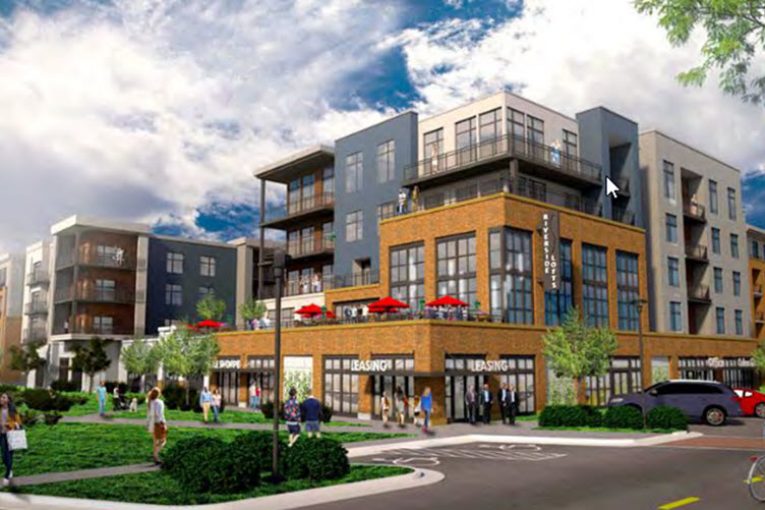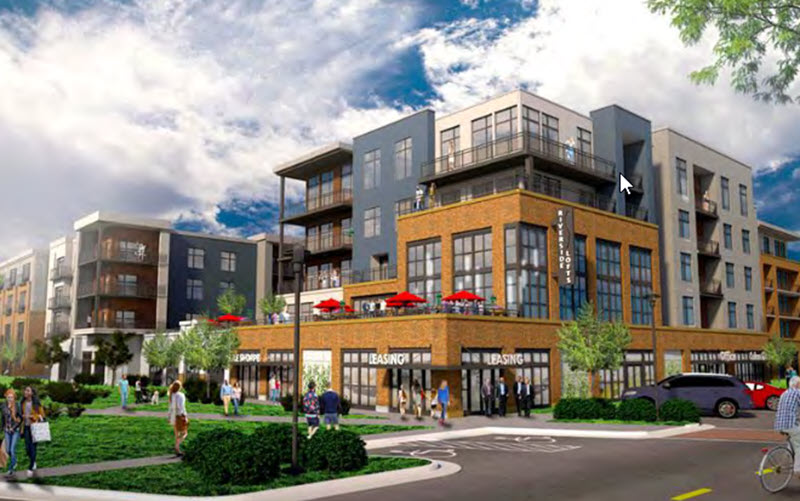

By David M. Greenwald
Executive Editor
Davis, CA – For those people who argue they don’t want to turn Davis into Natomas or Elk Grove—I get it. I don’t want to either. I don’t think anyone does. And I don’t think anything in the plans will actually do so.
DiSC 2022 adds about 100 acres, just over 1 million square feet of R&D space—available space which Dan Ramos and Tim Keller both noted this week is about out—while it adds about 540 housing units. It might be a large project by Davis standards, but it’s not going to turn Davis into anything that resembles Natomas or Elk Grove.
Nor is DiSC 2022 likely to be growth-inducing for Davis. Some critics have argued that DiSC will add housing demand to Davis and the region, but that’s not the conclusion that the EIR reached.
Based on the EIR’s analysis, “the increase in housing demand associated with the DISC project could have been met within the City rather than the surrounding SACOG region.”
The EIR notes, “A total of 2,088 of the planned and approved units are proposed for moderate—or above moderate—income units, which are likely to align with the incomes of most DiSC 2022 employees. With that capacity, the raw demand for housing in Davis generated by DiSC 2022 could be met with the existing planned and approved units and, as such, the project does not  induce a need for increased housing construction.”
induce a need for increased housing construction.”
One of the keys to this is the slow build out of DiSC, it’s not as if it is going to suddenly be plopped down with an estimated 2800 employees. Rather, those employees will be added slowly over time, allowing the city and region to slowly absorb that growth.
The project will of course convert around 100 acres of agricultural land to urban uses.
Bob Dunning in his column yesterday points out “over time, just about all of Davis has been built on prime ag land by developers who were seeking to profit.”
That means “if you are currently a Davis homeowner whose home was built sometime in the last 100 years by a greedy developer and you are feeling guilty about the paving of prime ag land, you may want to rent a bulldozer, plow your home into oblivion and plant several neat rows of corn and sugar beets and tomatoes and any other crop where a golden pheasant could hide.”
Dunning notes, “Our family lived in one of the first homes built in Oeste (rhymes with toasty) Manor and we could sit in the backyard and see the sun set over the Putah Hills. That homestead is now smack in the middle of Davis and the only view from the backyard is of the westerly neighbor’s chimney peeking over the back fence.”
He writes, “Every time a developer proposes a project on land that is currently being farmed, cries of ‘Save Prime Ag Land’ can be heard. Many recent letters to the editor in Davis’ Only Local Newspaper have cited the loss of prime ag land as a reason to oppose Measure H. And, of course, all developers are by definition ‘greedy’ and seeking only ‘profit.’”
Dunning notes that when he and his family moved from Portland so his father could go back to college after WWII, Davis had about 3500 people.
He writes, “Do I long for the days of my youth that included Foster’s Freeze, the Vienna Bakery, Old State Market downtown and summer afternoons jumping off The Tower at Hickey Pool on campus? Of course.”
At the same time he notes, “Then again, way back then we didn’t have an Art Center, a Pence Gallery, a Community Park and a million other amenities we now take for granted. And our beloved California Aggies were playing the Cal Ramblers instead of the Cal Bears.”
He adds, “Times change.”
I have pointed out, “Times change” regardless of what you do.
A previous letter noted that they came here for the amenities and the great schools.
The problem of course is that current Davis policies are actually putting both of those things in peril. We have declining enrollment which is an insidious force the way that school funding and economics work. Some have suggested merely “right-sizing” the schools, but they are missing a key point—even if you could kick out all of the out-of-district transfers, the schools would still be declining in size and still bleeding ADA money. Shrinking the size of the district at best would be a temporary salve, it does not solve the problem.
The problem as Rachael Fulp-Cooke in a letter today points out is that “too many individuals and families who work in Davis have been priced out of the Davis rental and housing market.”
Sure, you can close a school and save some money, but that doesn’t reverse the declining trend.
Moreover, those amenities are things that the city is struggling to finance. As Mayor Partida put it, “We have a lot of amenities. We have trees that are dying. We got roads that need to be fixed. We have all these amenities that people stay here for and come here for and are very proud of, but we need ways to pay for them.”
In short, the city that you are trying to save through restricted growth is dying. That doesn’t mean we need to become Elk Grove in order to save it. We need smart and well-managed growth. That’s a middle course.
While it doesn’t mean we become Elk Grove, it also means that we do change.
As Dunning writes, “During the last go-round, one of the arguments of those who opposed what is now called DiSC was that the project would block the lovely view Davisites have of the stupendous Sacramento Skyline.”
But, quick research “showed that only 13 Davisistes actually had a view of the Sacramento Skyline from their homes and then only if they climbed up on the roof. The No on H folks have wisely dropped that silly argument this time around.”
I worry greatly about the future of this community. I fear that too many people have a nostalgia for the past and, by trying to hold onto that past, they have missed the fact that we need to plan for the future.







Turning Davis into Elk Grove has been a red herring for anti-growth advocates for as long as I can remember.
Hell, DISC won’t even turn Davis into Dixon.
Anyway, for those who fear Davis’ metamorphosis into Elk Grove I say what are you afraid of? Is it because Elk Grove has cheaper housing or because it’s more diverse?
I agree wholeheartedly Ron. David is reaching with this article.
However, I don’t follow your “Hell, DISC won’t even turn Davis into Dixon” comment. Care to elaborate? The point you are trying to make escapes me.
Elk Grove has cheaper housing because it doesn’t have the amenities that Davis has. As a result Elk Grove housing will always be cheaper than Davis housing no matter how much housing is added to Davis.
The EIR notes that the city and surrounding communities expected to absorb 1,269 additional housing units (offsite), in addition to the 460 housing units built onsite.
The need for 1,269 units not built onsite are specifically noted in the EIR.
David (for the moment) is arguing that Davis’ existing housing plan (which Davis is already having challenges gaining approval for) will “meet” this additional demand.
The problem is that the existing housing plan was created without considering the additional demand resulting from the creation of 2,500 jobs. In other words, the housing plan was created based upon existing housing demand – without considering the additional jobs/workers created by DiSC.
The state (SACOG) will increase the amount of housing that Davis is expected to provide in future rounds of “fair share” housing requirements, if DiSC is approved. The reason for that is because they base the need on the number of jobs in a given area. If the number of jobs increases, so will the “fair share” housing requirements in future rounds.
David knows that he is arguing for the creation of a housing shortage. However, he (apparently) believes that the city will approve additional, peripheral housing developments – partly as a result of the additional jobs created by DiSC. (No doubt, he and the Vanguard will continue advocating for this, especially if DiSC is approved.)
There’s already proposals to build additional peripheral housing near DiSC, in the form of Palomino Place and the massive Shriner’s proposal. (The developers of Palomino Place have already been advertising on the Vanguard for the past several months.) In addition, there’s the “other half” of DiSC, the property inside of the Mace curve, etc. All of these proposals are subject to additional Measure J votes, and are (by no means) “approved”.
None of these other proposals have been analyzed, much less “mitigated” regarding the additional traffic (and other) impacts they would bring. Despite being located in the same area as DiSC. (Again, the housing demand from DiSC itself would be used to “justify” these additional proposals.)
If DiSC is approved, David will be the first one to clamor for these additional peripheral housing developments. But given that approval is by no means automatic, those who are concerned about housing shortages (as David claims to be) might want to reconsider the housing shortage that they are advocating for, in the form of DiSC.
Correction – 2,800 new employees (not 2,500).
(Assuming that the commercial component is actually successful, of course.)
Seems that David is still arguing that the city should be adjusted to meet the needs of the school district.
With his statement, he’s also arguing that smaller districts are automatically less-efficient than larger districts. This is not something that should be taken at face value. There are school districts of varying sizes throughout the state. (Some of the largest school districts are also those which are having disproportionately-large financial problems. Los Angeles’ and Sacramento’s school districts come to mind.)
In any case, it would be irresponsible to rely upon a (resistant, self-interested) school district to arrive at unbiased conclusions regarding “right-sizing”.
The future is not looking good for resistant school districts throughout the state. Enrollment is expected to continue to decline for the state, as well as Yolo county. See interactive map, below.
https://www.ppic.org/interactive/changes-in-k-12-enrollment-across-californias-counties/
.
It is fascinating to read this quote from the EIR. It makes me wonder if it was written by Marie Antoinette. It has no compassion. It has no soul. It has no connection to the most important housing reality in Davis … the lack of housing that is affordable to people whose incomes are not “moderate—or above moderate”
In a perfect world, Davis would be following a plan to have 100% of the new units of housing be for low — or very low — or extremely low — income buyers/renters. The EIR can make its argument above only if Davis ignores that crucially important segment of housing demand. Perhaps the EIR writers wanted those income groups to live in tents along the side of the I-80 right of way.
Words matter. They should have read their own words before publishing the EIR. The Vanguard should have read those words before publishing this article.
/rant
The problem is that those units were not intended for (and have nothing to do with) the additional demand created by adding 2,800 employees, if DiSC is approved.
Those units were intended to accommodate pre-existing demand, without DiSC. (And for that matter, who knows if they’d all even be built.)
I’m a big proponent of affordable housing…particularly publicly owned affordable housing. But I recognize that 100% affordable housing for DISC probably isn’t financially viable for the developer.
In fact, I am not a fan of the efforts (which started in the 70’s) to make for profit housing pay directly for affordable housing. It’s just inefficient. You end up with affordable homes that are affordable for a period of time before they become market rate homes and are no longer counted as part of the affordable home inventory.
Tried to add (but was cut-off prematurely):
It would be helpful to see a breakdown of the 2,088 planned housing units. (No doubt, it includes the Nishi student housing development, and the senior Bretton Woods housing – neither of which are likely to house large numbers of DiSC employees.)
Matt you are quoting from the DIR and suggesting there are no planned affordable units in Davis.
The EIR notes, “A total of 2,088 of the planned and approved units are proposed for moderate—or above moderate—income units, which are likely to align with the incomes of most DiSC 2022 employees.”
Yet you ignore the housing element which calls for significant extremely low, very low, and low income housing. 930 such units to be precise.
The EIR was only acknowledging the projects in the pipeline, not the housing element.
“Yet you ignore the housing element which calls for significant extremely low, very low, and low income housing. 930 such units to be precise.”
Units that are never going to get built.
I agree with Ron Glick’s “Units that are never going to get built” comment.
The housing element “depends upon” the projects in the pipeline. How much overlap is there?
Aren’t most of these housing units intended for existing demand (primarily student or senior housing)?
You can apparently see the breakdown of the 2,088 housing units under the “Pending or Under Construction” header on the city’s website (below). As already noted, it includes the 700 unit Nishi student housing development, as well as the 475 unit Bretton Woods senior housing. Neither of which is intended to accommodate workers at DiSC.
https://www.cityofdavis.org/city-hall/community-development-and-sustainability/development-projects
In fact, none of these approved housing developments were intended to accommodate the additional demand created by adding 2,800 DiSC workers to the city of Davis.
Those approvals occurred before DiSC even appeared on the upcoming ballot.
Are you claiming something different?
Probably true, but also true that they have nothing to do with addressing the increased demand from DiSC.
The EIR provided no source for its 2,088 number, so the actual number itself is irrelevant. What the EIR did say was that 100% of that number, whatever its source may be, should go to moderate—or above moderate—income units. That treats the low — or very low — or extremely low — income buyers/renters with a “let them eat cake” disdain.
This statement doesn’t make much sense. If the schools are in financial trouble you have two basic ways to fix this; generate more revenue (students) or reduce costs…..or some combination of both. But the underlying question is why the school’s current financial model is a problem. If the money received per student doesn’t pay for the cost of educating them in the manor that DJUSD wants them educated, then simply pumping in more students for revenue isn’t going to solve the problem. If the problem isn’t just a cost of goods sold problem then there are fixed costs issues. And if more students are necessary to fix that problem; then there should be a rough target for number of students revenue that meet the fixed costs. Or conversely a reduced target number that downsizes the fixed costs where revenue and costs balance out. But simply calling to pump in new students for revenue just isn’t the answer without some targeted financial and educational goals.
Bingo.
Seems like the folks who are analyzing this may have missed-out on some basic math classes, themselves. (That’s probably the most “generous” explanation that can be put forth, regarding their motivation.)
Sure – count on the folks who could lose their jobs to “justify” the reason that downsizing won’t reduce costs.
Some of those arguing against prison closures were using the same argument that the school district is using. (In other words, keeping “my” community’s prison open reduces overall costs.)
The same thing occurs whenever military bases are proposed for closure. That’s why Congress came up with an independent commission, to determine the latter.
Schools are not prisons. Despite what some people think.
It’s not a comparison of what they each “do”.
It’s a comparison of how unwise it is to depend upon a self-interested institution to determine (and report on) “whether or not” it would save money to shut-down their own, unneeded facilities.
When it comes right down to it, the people who work in all institutions are interested in keeping their jobs.
Keith E. has this right. (The “other” Keith also mentioned this, as I recall):
In fact, the fiscal hole becomes larger with each student added, under this scenario.